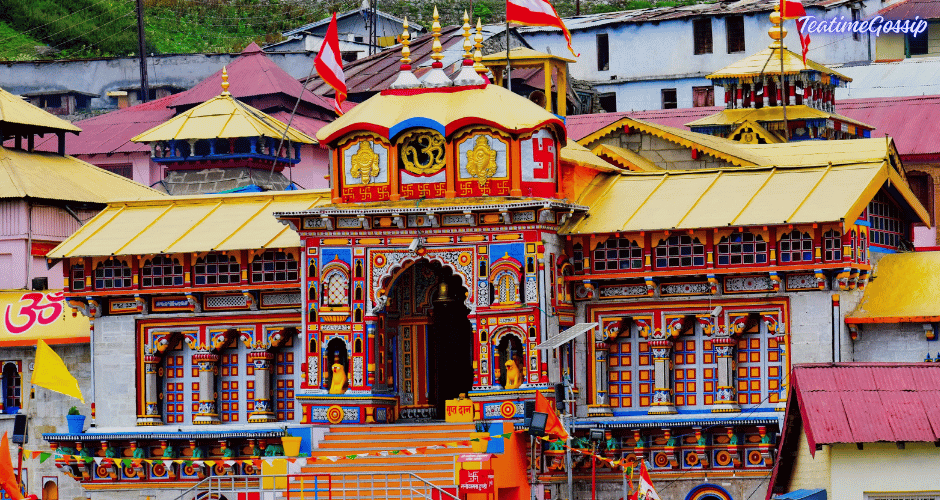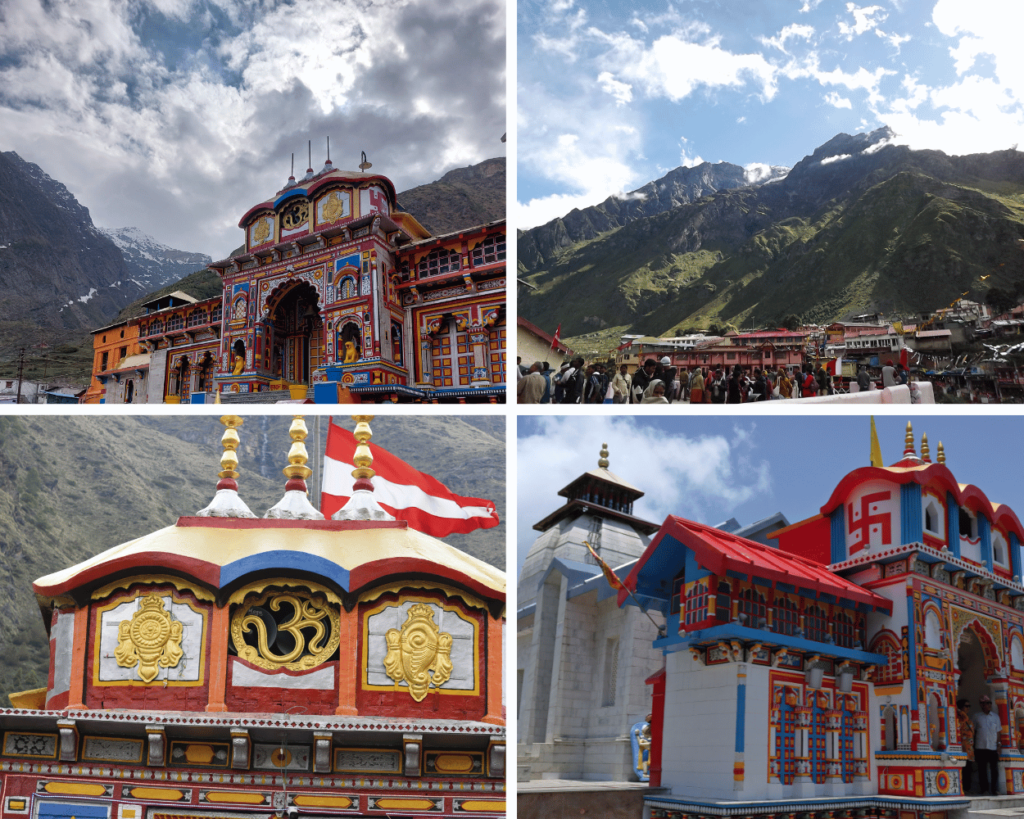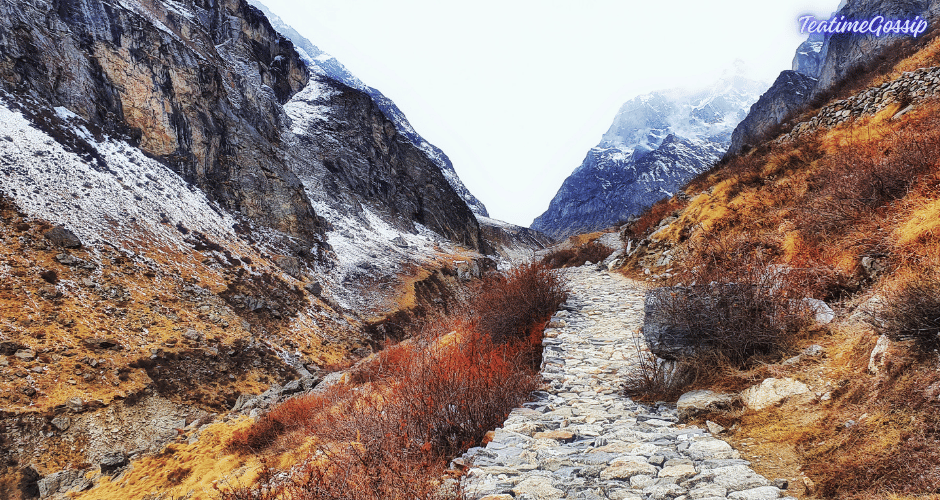Badrinath Yatra: A Journey of Devotion and Spiritual Enlightenment

Badrinath, one of the most revered pilgrimage destinations in India, is nestled in the lofty Himalayas of Uttarakhand. This sacred town, named after Lord Badrinarayan (a form of Vishnu), is part of the Char Dham Yatra, which includes Kedarnath, Gangotri, and Yamunotri. The Badrinath Yatra attracts thousands of devotees and spiritual seekers from across the globe, offering them a journey of faith, devotion, and scenic beauty.
The Sacred Badrinath Temple
The Badrinath Temple, dedicated to Lord Vishnu, is the focal point of the pilgrimage. Situated at an altitude of 3,300 meters (10,827 feet), the temple is an architectural marvel with a colorful facade and intricate carvings. The main sanctum houses the one-meter-tall black stone idol of Lord Badrinarayan, depicted in a meditative posture.
The temple is flanked by two mountain ranges, Nar and Narayan, and the Neelkanth peak forms a stunning backdrop. The temple complex also includes 15 idols, each sculpted in black stone, representing various deities.

Historical and Mythological Significance
The history of Badrinath dates back to ancient times. According to Hindu mythology, Badrinath was originally established by Adi Shankaracharya in the 8th century. It is believed that Shankaracharya discovered a black stone image of Lord Badrinarayan in the Alaknanda River and enshrined it in a cave near the Tapt Kund hot springs. This idol was later moved to the current temple by the king of Garhwal.
Mythologically, Badrinath is considered the abode of Lord Vishnu. Legends narrate that Lord Vishnu performed penance here, with Goddess Lakshmi (in the form of a Badri tree) providing him shelter from the harsh weather. The town’s name, Badrinath, is derived from ‘Badri’ (a type of wild berry) and ‘Nath’ (Lord), symbolizing Lord Vishnu’s association with the place.
The Sacred Badrinath Temple
The Badrinath Temple, the focal point of the yatra, is an architectural marvel adorned with intricate carvings. It stands at an elevation of 3,300 meters (10,827 feet) and is dedicated to Lord Vishnu. The temple is believed to be over a thousand years old and is built in the traditional Garhwali wooden style. It houses the idol of Lord Badrinarayan, made of black Saligram stone, which is considered one of the eight self-manifested statues of Vishnu.
The Journey to Badrinath
The journey to Badrinath is as enchanting as the destination itself. The yatra typically starts from Haridwar or Rishikesh, both significant spiritual hubs. Pilgrims travel through picturesque towns and villages like Devprayag, Rudraprayag, Karnaprayag, and Joshimath, each with its own mythological and cultural significance. The route offers breathtaking views of the Himalayas, lush valleys, and confluences of sacred rivers.

Key Attractions in and Around Badrinath
- Tapt Kund: A natural hot water spring near the temple, where pilgrims take a holy dip before entering the shrine. The water is believed to have medicinal properties.
- Narad Kund: A recess in the river Alaknanda, believed to be the spot where the idol of Lord Vishnu was found.
- Mana Village: The last village on the Indian border, known for its mythological significance. It is said to be the place where the great sage Ved Vyasa composed the Mahabharata.
- Vasudhara Falls: A stunning waterfall located 9 kilometres from Badrinath, accessible by a trek. The falls are surrounded by serene natural beauty and are considered spiritually uplifting.
- Charanpaduka: A rock believed to bear the footprints of Lord Vishnu, located at a height of 3,380 meters. It is a popular trekking spot for pilgrims.
Spiritual Practices and Festivals
The Badrinath Temple follows a strict ritualistic schedule. The temple opens in late April or early May and closes in early November due to heavy snowfall. The opening and closing ceremonies are marked by elaborate rituals and attract large crowds. The most significant festival celebrated here is the Badri-Kedar Utsav, which showcases the rich cultural heritage of the region through music, dance, and religious performances.

Tips for Pilgrims
- Preparation: Due to the high altitude, it is advisable to acclimatize and carry necessary medications. Pilgrims should be prepared for a physically demanding journey.
- Clothing: Warm clothing is essential, even during the summer months, as the weather can be unpredictable.
- Accommodation: Several guesthouses, hotels, and dharamshalas are available for pilgrims. It is advisable to book in advance during peak season.
- Respect Local Customs: Pilgrims are encouraged to respect local traditions and customs. Photography is usually restricted inside the temple.
The Badrinath Yatra is not just a pilgrimage but a transformative journey that combines faith, devotion, and the awe-inspiring beauty of the Himalayas. It offers an opportunity for spiritual enlightenment and a deeper connection with nature. For many, the yatra to Badrinath is a once-in-a-lifetime experience that leaves an indelible mark on their souls. For more information on the Badrinath Yatra, you can visit the official Badrinath Temple website